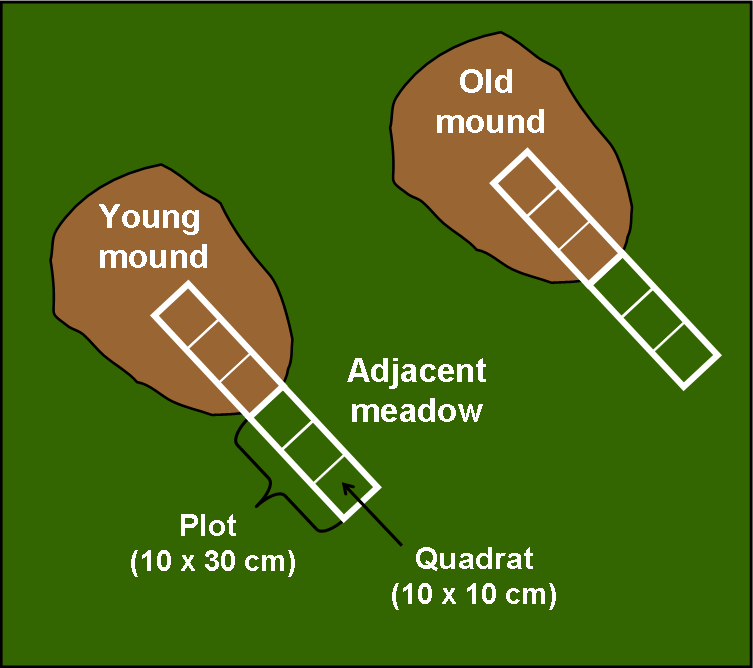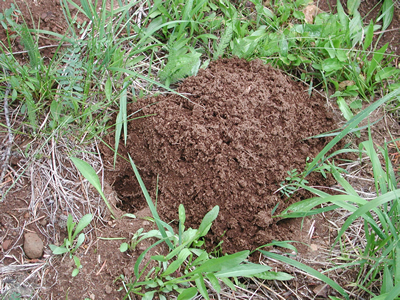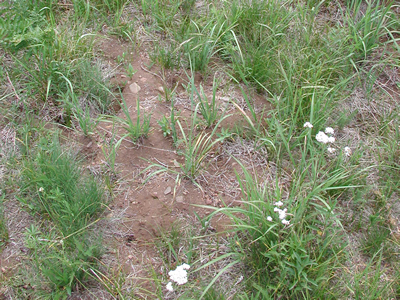| Sampling
design |
 |
| Plots
composed of three quadrats were used to sample vegetation
on gopher mounds and in adjacent meadow. |
|
Three
open meadows (1-8 ha) were selected for sampling in Jul 2004. A total
of 74 mounds was chosen to represent two age classes: young and old
(photos, far right). (Fresh mounds were not sampled because they did
not have plant cover.) Vegetation
was sampled using plots (10 x 30 cm) located fully on mounds or
in adjacent meadow (figure, right). Within each plot, we recorded
the presence of all species and estimated total cover of forbs and
graminoids in each of three quadrats (10 x 10 cm).
Analyses
For each
age class (young mounds, old mounds, and adjacent meadow) we computed
the following community measures and tested whether they differed
statistically:
- Cover.
Total, graminoids (grasses and sedges), and forbs
- Richness.
Mean number of species per quadrat (10 x 10 m) and per plot (10
x 30 cm)
- Heterogeneity.
Species heterogeneity at two spatial scales: (a) within plots
(among quadrats) and (b) among plots. Heterogeneity was measured
by Sorensen’s index which ranges from 0 (quadrats or plots
share all species in common) to 1 (no species in common).
|
Age
classes
of gopher mounds |
| Fresh
mound |
 |
| Formed
in the current growing season with no plant cover.
(Fresh mounds not sampled.) |
|
| Young
mound |
_15%20Jul%202007.jpg) |
| Formed
1-2 yr before sampling, showing signs of compaction
and weathering, but surface elevated above surrounding
meadow. |
|
| Old
mound |
 |
| Formed
at least 3 yr before sampling, they showed pronounced
compaction and weathering. The surface was only
slightly, if at all, elevated. |
|
|
|
![]()
![]()
![]()
![]()
_13%20Ju%202009_sm.jpg)


_15%20Jul%202007.jpg)
